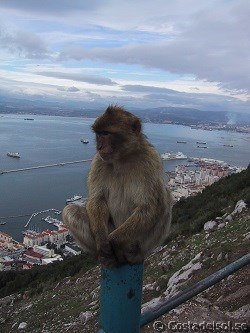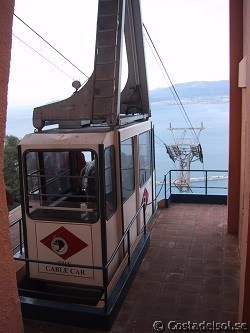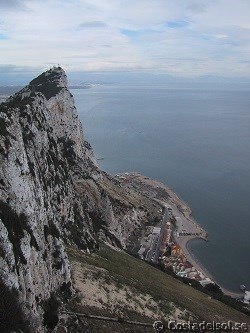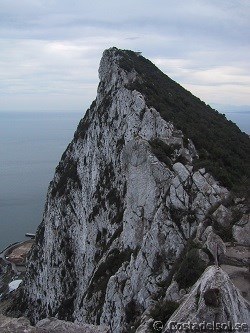Gibraltar
Accommodations – Transfer:
Hotels – Rent apartment – Rent a house – Rental car – Transfer from airport
See our slideshow about Gibraltar!
Gibraltar is a British Overseas Territory located on the southern coast of Spain, at the entrance to the Mediterranean Sea. It is known for its strategic location, historical landmarks, and unique cultural blend of British and Spanish influences.
One of the most iconic landmarks in Gibraltar is the Rock of Gibraltar, a massive limestone rock that stands at 1,398 feet high. The Rock is home to the Upper Rock Nature Reserve, which is a UNESCO World Heritage Site, and offers a wide range of attractions, such as the St. Michael’s Cave, the Great Siege Tunnels, and the Barbary macaques, a group of monkeys that are the only wild monkeys in Europe.
History and landmarks
Gibraltar has a long history and a unique culture, blending British and Spanish influences. The Rock of Gibraltar and the Upper Rock Nature Reserve are among the most iconic landmarks in the region, but there’s also a variety of other attractions and activities, making Gibraltar a great destination for visitors looking to experience a unique blend of history, culture and nature.
St. Michael’s Cave is a natural limestone cave located in the Upper Rock Nature Reserve of Gibraltar. The cave is a popular tourist destination and offers visitors a unique insight into the geological history of the rock.
The cave is named after the patron saint of Gibraltar, St. Michael, who, according to legend, appeared to a group of soldiers in the cave in the 14th century. The soldiers, who were suffering from a plague, claimed that St. Michael appeared to them and cured their illness. The cave has been a place of pilgrimage ever since.
The cave is formed of limestone and has been shaped by millions of years of erosion. The cave has several chambers, each with its own unique features. The main chamber is known as the Great Cathedral and is noted for its impressive stalactite and stalagmite formations. The cave also has an underground lake and an entrance to the Upper Galleries, a network of smaller chambers that were used by the British military during World War II.
Visitors can take guided tours of the cave, which provide information on the geology and history of the cave. The tour also provides an opportunity to see the bats that call the cave home, as well as to explore the Upper Galleries.
In addition to its natural and historical significance, St. Michael’s Cave also has an important cultural significance. The cave has been used as a venue for performances and concerts, and was even used as an underground hospital during World War II.
Despite being an underground cave, it offers spectacular views of the city, when you reach the highest point of the cave. the variety of colors and formations in the cave, and its historical and cultural significance make St. Michael’s Cave an interesting and unique destination for visitors to Gibraltar.
The Rock of Gibraltar, as it is commonly known, has been inhabited since prehistoric times. The Phoenicians, Greeks, and Romans all established settlements on the rock, and it is believed that the name “Gibraltar” is derived from the Arabic name “Jabal Tariq,” which means “mountain of Tariq,” after the Muslim general Tariq ibn-Ziyad who led the invasion of Spain in 711 AD.
During the Middle Ages, Gibraltar was controlled by various Muslim dynasties, including the Moors and the Almohads. In 1462, the Kingdom of Castile, a state in medieval Spain, conquered the city and it remained under Spanish rule for the next 300 years.
In 1704, during the War of the Spanish Succession, an Anglo-Dutch force captured Gibraltar from the Spanish, and it has been under British control ever since. The rock became a British colony and naval base, and played a key role in the defense of the British Empire during both World War I and World War II.
Since the late 18th century, Spain has repeatedly called for the return of Gibraltar to Spanish sovereignty, and the territory’s status has been a source of ongoing tension between the two countries. Despite this, Gibraltar has remained a British Overseas Territory and the people of Gibraltar voted overwhelmingly to remain under British sovereignty in a 2002 referendum.
[wp_ad_camp_1]
Attractions
Another popular attraction in Gibraltar is the Main Street, which is lined with a variety of shops, restaurants, and cafes. The street offers a unique blend of British and Spanish influences, and visitors can find everything from traditional British pubs to Spanish tapas bars. The city center of Gibraltar has also a lot of historic buildings and monuments, some dating back to the time of the Moorish occupation of the Iberian peninsula.
Gibraltar is also a popular destination for outdoor enthusiasts, as it offers a wide range of activities, such as hiking, rock climbing, and bird watching. The territory has several nature reserves that are home to a variety of flora and fauna, such as the Eastern Beach Nature Reserve, which is a haven for migratory birds and the Alameda Botanic Gardens that offer an opportunity to discover a wide variety of tropical and subtropical plants.
In terms of accessibility, Gibraltar can be reached by land through the border crossing with Spain, by air through Gibraltar International Airport or by sea through the port.
 |
 |
 |
 |
 |

